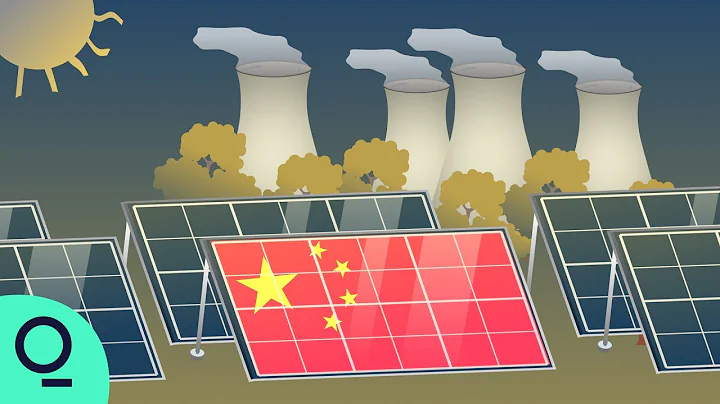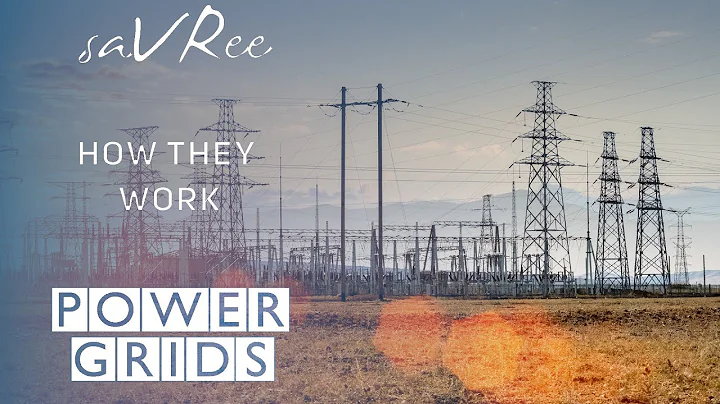(Source) Power Grid Think Tank
National Power Industry Statistics from the National Energy Administration in 2019 show that power plants of 6,000 kilowatts and above nationwide consume 307 grams of standard coal.
70% of one kilowatt hour of electricity comes from thermal power. As of the end of 2019, thermal power installed capacity accounted for 59% of the country's total installed capacity, and power generation accounted for 68% of the country's total power generation.

Data source: China Electricity Council
In 2019, Guangdong, Jiangsu, and Shandong provinces ranked the top three in electricity consumption, Shandong, Inner Mongolia, and Jiangsu ranked in the top three in power generation; Guangdong, Zhejiang, and Jiangsu ranked in the top three in power reception outside the region. Beijing, Shanghai, and Chongqing rank among the top three in terms of the proportion of electricity consumed by power received outside the area.
Table: Electricity production and consumption in each province in 2019 (unit: 100 million kWh)

Data source: National Bureau of Statistics
Electricity prices and costs of several typical generating units, coal-fired generating units, hydropower generating units, wind turbines, and photovoltaic generating units and nuclear power plants.
Coal-fired power generation units
my country's power supply structure is dominated by coal-fired thermal power units, which will be difficult to change for quite some time in the future. It is precisely because of the importance of coal-fired units that the on-grid electricity price policy for my country's power generation units has always been based on the on-grid electricity price policy for coal-fired units. It has gone through the principal and interest payment price, the operating period electricity price, and is now the benchmark electricity price policy period. On September 26, 2019, the State Council executive meeting decided to improve the electricity price formation mechanism for coal-fired power generation. Starting from January 1st next year, the coal-fired power linkage mechanism will be cancelled, and the current benchmark on-grid electricity price mechanism will be changed to a "base price". + floating up and down” market-oriented mechanism. The base price is determined based on the current benchmark on-grid electricity price for coal-fired power generation in various places. The floating range is no more than 10% and no more than 15% in principle. Specific power generation companies, power sales companies, power users, etc. will determine it through negotiation or bidding, but it will be temporarily suspended next year. It should not rise. In particular, it is necessary to ensure that the average electricity price for general industry and commerce only falls but does not rise. The provincial desulfurization benchmark on-grid electricity price for the coal-fired thermal power generation component in 2018 is shown in the figure.

Data source: public information
The factors that affect the on-grid electricity price of coal-fired thermal power units mainly include coal price, project cost, annual power generation utilization hours, unit fixed cost, long-term loan interest rate, depreciation rate, etc. Among them: the three main factors that affect the benchmark on-grid electricity price level are coal price, project cost, and annual power generation utilization hours. In different periods and different units, fuel costs account for 50%-70% of power generation costs.
Hydroelectric power generation unit
Hydroelectric power generation is an important way to utilize water energy. Hydropower generation usually requires the construction of retaining dams to concentrate the drop in the river section and form a reservoir, which can regulate flow and retain floods. It is divided according to the adjustment cycle, that is, according to the time of a reservoir storage and discharge cycle, including no adjustment, daily adjustment, weekly adjustment, annual adjustment and multi-year adjustment, etc. No adjustment means that the reservoir has no adjusted storage capacity and water is supplied according to the natural flow; daily adjustment means that the even incoming water of the reservoir within a day is adjusted according to the water demand process of the water department, and the water level in the reservoir completes a cycle within a day and night; weekly adjustment , using reservoirs to store excess water during holidays during the week for use on other working days. Weekly adjustment reservoirs generally also perform daily adjustments at the same time; annual adjustment, redistribution of runoff in the high and dry seasons of the year (seasonal changes) ); years of adjustment, the reservoir has a large storage capacity, and the excess water stored in wet years is used to supplement the water shortage in dry years.

According to the results of the 2005 national water resources review, there are 3,886 rivers in mainland my country with theoretical water resource reserves of 10,000 kilowatts and above, and the economically developable installed capacity is 401.8 million kilowatts.
Data source: public information
my country's hydropower on-grid electricity price policy has a diversified pattern, which is divided into on-grid electricity price according to the operating period, benchmark on-grid electricity price and reverse pricing based on the average on-grid electricity price in the power receiving market.On January 11, 2014, the "Notice of the National Development and Reform Commission on Improving the Formation Mechanism of Hydropower On-grid Prices" (Fa Gai Price [2014] No. 61):
For hydropower stations newly put into operation after February 1, 2014, the cross-region and cross-region The provincial transaction price is determined by negotiation between the supply and demand parties; the provincial on-grid electricity price implements a benchmark electricity price system, and based on the role of the hydropower station in the power system, a time-of-use electricity price or a classified benchmark electricity price can be implemented in peak and dry periods; competition is encouraged to determine hydropower prices; gradually Unify the on-grid electricity prices for cascade hydropower stations in the river basin.
Pumped storage power station is a special hydropower station that uses excess electricity to pump water from the lower reservoir to the upper reservoir for storage during low power consumption periods, and then releases the water to generate electricity during peak power consumption periods and allows the water to flow to the lower reservoir. . The pumped storage power station is a hydropower station built to solve the problem of supply and demand conflicts between system peak load regulation and low valleys, and to ensure the development of new energy. It can also undertake auxiliary service functions such as frequency modulation, phase modulation and emergency backup of the system. It is generally believed that a pumped storage power station converts 4 kilowatt-hours into 3 kilowatt-hours. It consumes 4 kilowatt-hours of electricity when pumping water and can only emit 3 kilowatt-hours when generating electricity. The conversion efficiency can be considered to be 75%. Based on this, there are fundamental differences between the on-grid electricity prices of pumped storage power station motors and other power sources, mainly including unified management of the power grid, single electricity price, two-part electricity price, and leasing electricity price.

Image source: Internet map
On July 31, 2014, the "Notice of the National Development and Reform Commission on Issues Concerning Improving the Price Formation Mechanism of Pumped Storage Power Stations" (Fagai Price [2014] No. 1763) further improved the price of pumped storage power stations. formation mechanism. Before the formation of the electricity market, pumped storage power stations implemented a two-part electricity price system. Electricity prices are determined based on the principle of reasonable cost plus allowable revenue.
In the two-part power price system, the capacity price mainly reflects the value of auxiliary services such as backup, frequency modulation, phase modulation and black start provided by pumped storage power stations, and is determined in accordance with the principle of covering the fixed costs and allowed income of pumped storage power stations. Benchmark capacity electricity prices will be gradually implemented for newly put into operation pumped storage power stations; the electricity price mainly reflects the peak-shaving and valley-filling benefits achieved by pumped storage power stations through pumping power. It mainly covers variable costs such as loss of pumping power in pumped storage power stations. The electricity price level is based on the benchmark on-grid electricity price for local coal-fired units (including environmentally friendly electricity prices for desulfurization, denitrification, dust removal, etc.).
For the pumped electricity provided by power grid enterprises to pumped storage power stations, the electricity price is 75% of the benchmark on-grid electricity price for coal-fired units. The capacity electricity charges and pumping losses of pumped storage power stations are included in the unified accounting of local provincial power grids (or regional power grids) and are considered as factors in the adjustment of sales electricity prices.
In order to promote the marketization of electricity prices for pumped storage power stations, in qualified areas, we encourage the use of bidding, market bidding and other methods to determine the owners, electricity, capacity prices, pumped water prices and on-grid electricity prices of pumped storage power station projects. At present, during the transitional period of the formation of the power market, pumped storage power stations are not included in the transmission and distribution pricing costs. Grid companies are no longer able to bear the costs of pumped storage power stations. The marketization of pumped storage power station electricity prices is a topic that requires in-depth research.
Wind power generators
Wind power grid-connected electricity prices have initially been based on coal-fired power plant pricing, approved electricity prices, the coexistence of bidding and approved electricity prices, bidding plus approval methods, and benchmark electricity prices. Currently, we are in the transition from benchmark on-grid electricity prices to affordable and low-price grid electricity. The parity on-grid electricity price refers to parity with the benchmark on-grid electricity price for coal-fired units and does not require state subsidies. Low-price on-grid electricity prices refer to those that are lower than the benchmark on-grid electricity prices for coal-fired units.
On May 21, 2019, the "Notice of the National Development and Reform Commission on Improving the Wind Power On-grid Price Policy" (Fa Gai Price [2019] No. 882) changed the benchmark on-grid power price of onshore wind power and offshore wind power to a guide price. The newly approved The on-grid electricity prices for centralized onshore wind power projects and offshore offshore wind power are all determined through competition and shall not be higher than the guide price in the resource area where the project is located; the on-grid electricity price for intertidal offshore wind power determined through competition shall not be higher than the onshore price in the resource area where the project is located. Wind power guide price. Beginning in 2021, wind power projects will be fully desubsidized and enter an era of parity.

Data source: public information
From the perspective of the entire life cycle, the cost of wind power can be mainly divided into unit cost, construction cost, operation and maintenance cost, personnel cost and material fee, etc.
Solar power generation set
Solar power generation is divided into photovoltaic power generation (PV) and photothermal power generation (CSP). Photovoltaic power generation includes centralized ground power stations and distributed photovoltaic power generation projects combined with buildings.
On April 28, 2019, the "Notice of the National Development and Reform Commission on Issues Concerning Improving the On-grid Pricing Mechanism for Photovoltaic Power Generation" (Fa Gai Price [2019] No. 761) changed the benchmark on-grid tariff for centralized photovoltaic power stations to a guidance price, adding a new In principle, the on-grid electricity price of centralized photovoltaic power stations is determined through market competition and shall not exceed the guide price of the resource area where it is located. Starting from 2021, except for household photovoltaics, photovoltaic projects will be fully de-subsidized and enter the era of parity. Table: Guided electricity price for photovoltaic projects in 2020 (unit: yuan/kWh)

Data source: public information
The National Development and Reform Commission has approved the national unified benchmark grid-connected electricity price for solar thermal power generation (including heat storage function for more than 4 hours) to be 1.15 per kilowatt-hour. Yuan (including tax), all solar thermal power generation projects put into operation before December 31, 2018 will implement the above-mentioned benchmark on-grid electricity price. The mechanism for the decline in the on-grid electricity price of solar thermal power generation has not yet been determined. Considering the current situation of the solar thermal power generation industry, the magnitude of the decline may not be too large.
Nuclear power units
The proportion of my country's nuclear power installed capacity is relatively small. Like general thermal power units, nuclear power costs are mainly composed of construction costs, operation and maintenance costs, and fuel costs. Nuclear power costs also have the characteristics of large room for reduction in long-term costs and insignificant regional differences.

Image source: Internet map
Because nuclear power is technically unsuitable to participate in market competition, before 2013, my country basically implemented a one-factory-one-price policy for nuclear power. On June 15, 2013, the National Development and Reform Commission issued the "Notice on Issues Concerning Improving the On-grid Pricing Mechanism for Nuclear Power" (Fagai Price [2013] No. 1130), which stipulates that benchmark on-grid tariffs will be implemented for newly built nuclear power units after January 1, 2013. Policy (Based on the current social average cost of nuclear power and the supply and demand situation in the electricity market, the national benchmark on-grid electricity price for nuclear power is 0.43 yuan per kilowatt hour); the national benchmark on-grid electricity price for nuclear power is higher than the benchmark on-grid electricity price for coal-fired units where the nuclear power units are located (including desulfurization and denitrification price increases) , the same below), new nuclear power units will be subject to local coal-fired units’ benchmark on-grid electricity prices after they are put into operation; for the first or first batch of nuclear power units or demonstration projects that undertake the tasks of nuclear power technology introduction, independent innovation, and localization of major special equipment, their on-grid electricity prices will be subject to Electricity prices can be increased appropriately.
In 2020, the electricity prices of various types of power generation projects are as shown in the figure below.






















